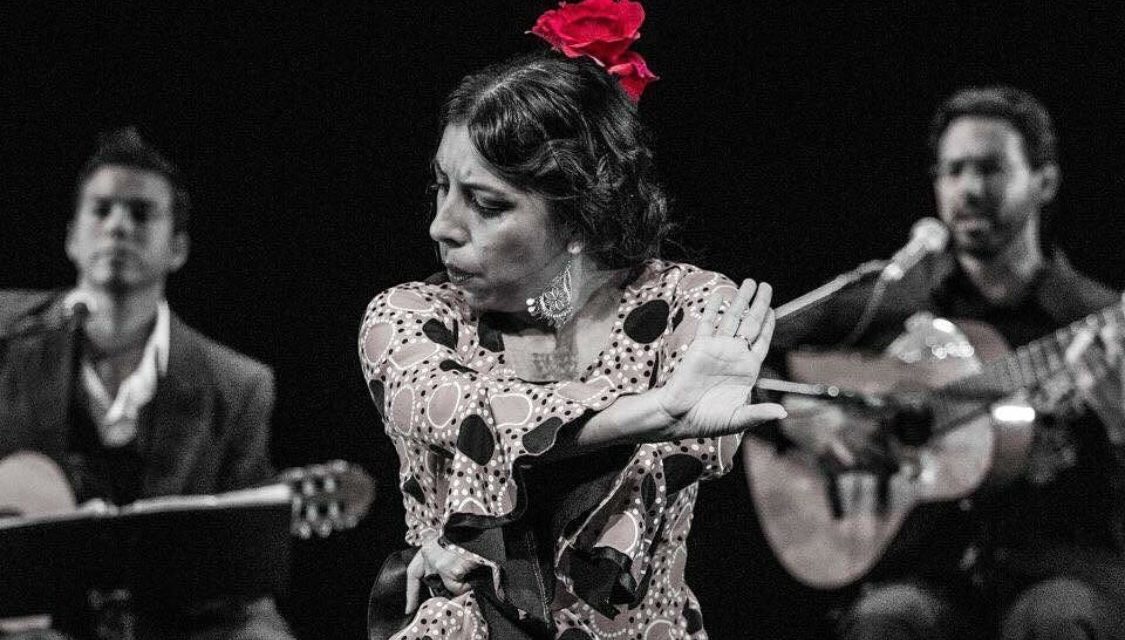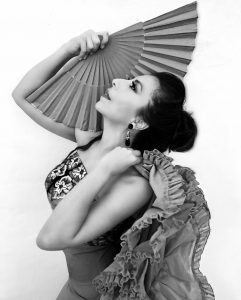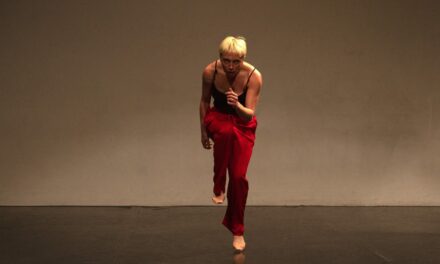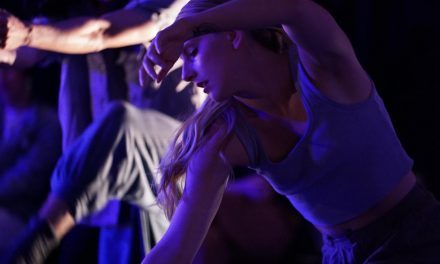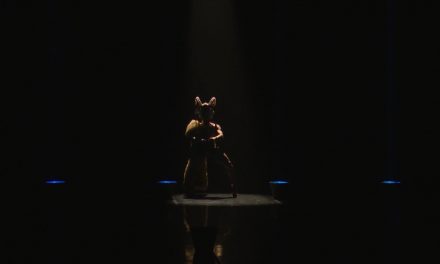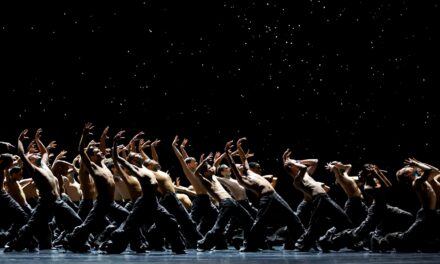It is Sunday, April 21st at the at the Bootleg Theatre. Over the murmurs and whispers of the audience, one can hear muffled zapateado (flamenco footwork) along with sounds from a guitar behind a black curtain. Moments later the performers walk on stage and take their places at their designated chairs. The two women dancers are dressed in traditional Flamenco wear; a colorful composition of flowers and varied fabrics against a stark black background. The performers exchange looks and whispers until guitarist Jose Tanaka begins to play. The rich sounds from Tanaka’s guitar transform the small theatre into a sacred place for Flamenco. After taking their time to embrace the sounds from the guitar, the performers gradually enter in with palmas (clapping) and rhythmically synchronized tapping of their feet. The performers have ceremoniously welcomed us into the space of tablao. Like in many performance settings tablaos are built on faith and honesty between the performers. With outstanding presence, the first dancer, Tiana Álvarez, stands from her chair with courage and grace as she begins moving to the rhythm of the guitar in short small steps. Her movement progressively becomes larger and as every part of her body from her core to her finger tips embodies the beautiful cante of José Cortez. The dancer is dancing Alegrías, a Flamenco from originally Cádiz, that is both joyous in name and melody. Together, the musicians and dancer carry each other through a beautifully danced pieced woven together with strong footwork and body movement. After the piece comes to the end with one final push of footwork and spirit, the dancer finishes strong. She thanks the musicians and fellow dancer and gracefully returns to her seat. Drenched in sweat the dancer collects herself and joins her fellow performers in palmas as they prepare for the next piece.
Tablaos emerged during the golden age of Flamenco between 1860 and 1920 where they served as spaces for Flamenco artists to come together and perform. Tablao shows are rarely rehearsed and often come together as they are being performed. It is clear that both performers in this evening’s show are well adapted to the nuances and intricacies of performing tablao style Flamenco with live musicians. Tablaos are such a rich part of Flamenco’s past and present. They are spaces where not only the musicians and dancers come together, but also challenge and support one another. Watching the play between both performers and musicians is exhilarating. The performers’ abilities to read each other’s movement, sound, expression is something that has clearly taken years of study and dedication, and not something that is to be taken for granted. The gratitude was not unmatched when lead performer Briseyda Zárate spoke to the audience, “I wouldn’t want to be anywhere else right now, and I’m glad you wouldn’t either”.
Zárate delivered a much-anticipated stellar performance. Her trust in her musicians reads in her body and expression. She is not a performer who fears being vulnerable on the stage. During her performance the admiration between Zárate and her musicians is made clear by subtle acknowledgements through looks and jaleo which are words of encouragement in Flamenco called out to the performer. Zárate exemplifies the strong performance that emerges when excellent technique meets a visceral understanding of Flamenco musicality. Her company combines cante, guitar, and baile to bring Flamenco magic to the Los Angeles stage. Zárate’s company is a reminder of why live Flamenco is never something to be missed.
Briseyda and company members hope to have many more tablaos in the future and suggest keeping up to date with upcoming performances through the Bootleg theatre’s website along with Briseyda personal website.
For information and tickets, click here.
For more information on Briseyda Zárate & Company, click here.
For information on the Bootleg Theater, click here.
Featured image: Briseyda Zárate – Photo courtesy of the artist.

